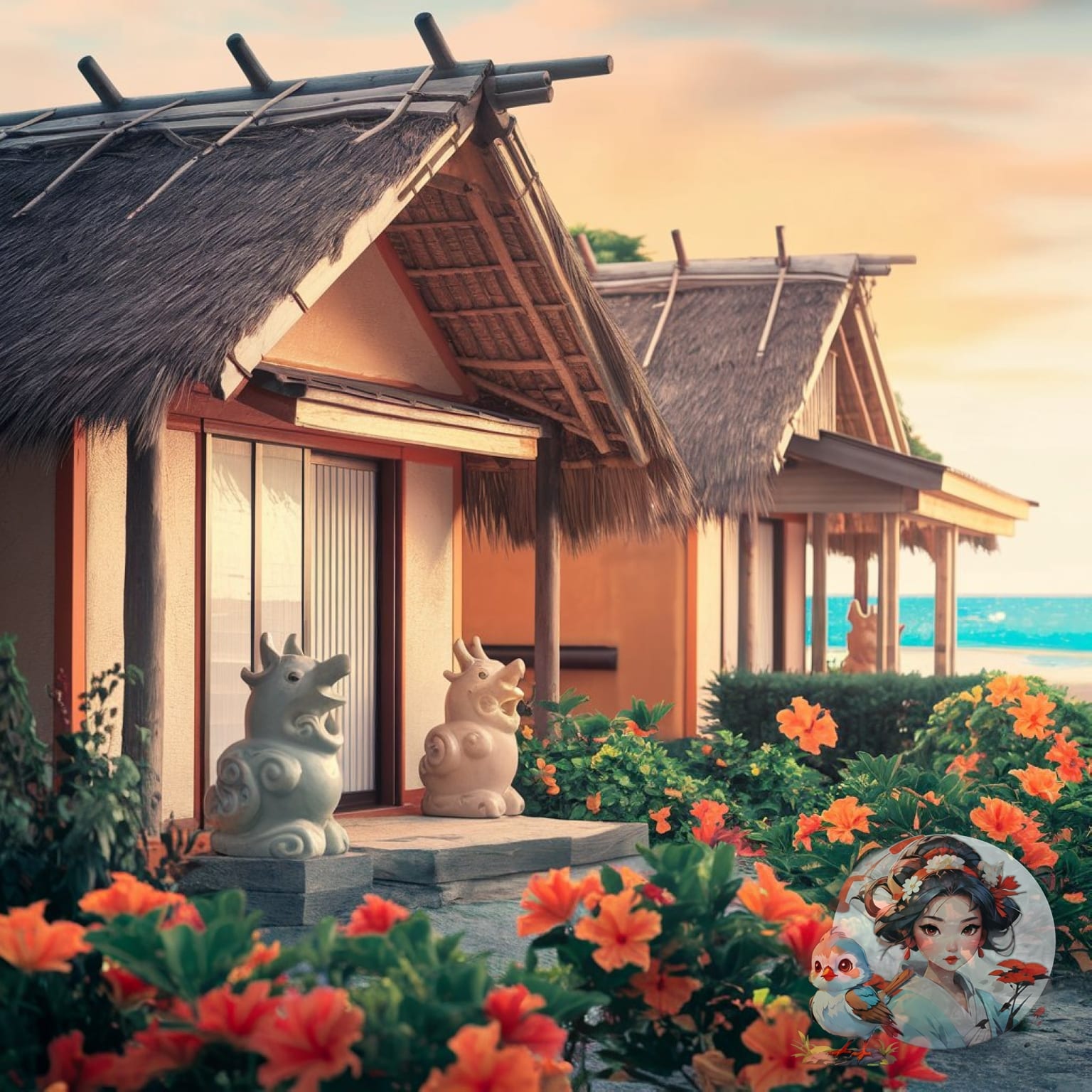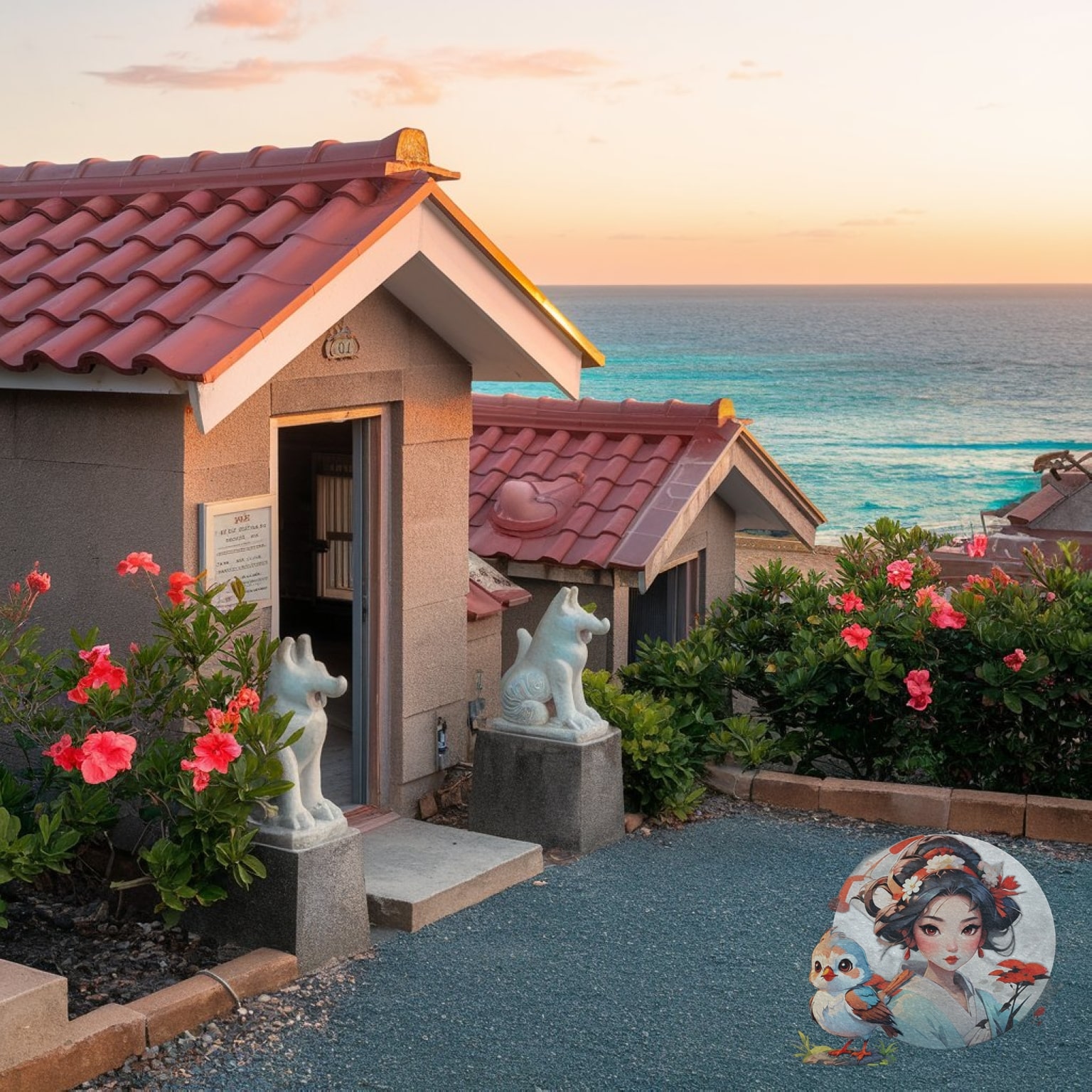As I delve into the secrets of Okinawa, a region in southern Japan renowned for its high percentage of centenarians, I’m reminded that the synergy between culture and cuisine plays a significant role in the well-being of its inhabitants. The traditional Okinawan diet, rich in plant-based foods and mindful eating practices, is often cited as a key factor in the island’s remarkable longevity.
Digging deeper, I find that Okinawa’s cultural heritage is a rich tapestry of influences, with threads from Japan, China and Southeast Asia intricately woven together. The island’s unique history, shaped by the Ryukyu Kingdom and its strategic location in the East China Sea, has contributed to the development of distinctive customs and traditions.
In Okinawan culture, food is not only a means of sustenance, but also a way of connecting with others and honouring the land. The emphasis on locally sourced ingredients, such as sweet potatoes, seaweed and turmeric, reflects a deep respect for nature and the cycles of life. Mindful eating practices, such as eating slowly and savouring each bite, are deeply rooted in the island’s culinary traditions.
The link between food, culture and well-being is also reflected in Okinawa’s traditional beauty practices. For example, the use of uguisu no fun, a type of nightingale droppings, as a natural face mask illustrates the ingenuity and creativity of Okinawan women in using local ingredients to maintain healthy, radiant skin. This synergy between nature, culture and beauty is a hallmark of Okinawan traditions and offers valuable insights into the island’s remarkable reputation as a ‘blue zone’.
Table of Contents
ToggleI’ve discovered a haven of longevity in Okinawa, where women live on average up to 86 years and men up to 80. The village of Ogimi is particularly remarkable, with the highest concentration of centenarians in the world.
A closer look at the lifestyle of the Okinawan people reveals a traditional diet rich in nutrients and regular physical activity as contributing factors to their extended lifespan. Their diet is rich in sweet potatoes, seaweed and soya products, which provide essential vitamins and minerals.
In studying the Okinawan community, I’ve noticed the importance of social connections and stress reduction in their daily lives. Community support and cultural practices, such as the “moai” system, where friends and family gather to share meals and provide emotional support, play a vital role in maintaining mental well-being.
Studying the unique habits of the Okinawan people offers valuable insights into the secrets of their remarkable longevity. By understanding the importance of a balanced lifestyle, social connections and stress reduction, we can develop effective strategies to promote healthy ageing worldwide.
Researchers have studied the Okinawan lifestyle to identify the key factors that contribute to their longevity. While there’s no single formula, it’s clear that a combination of a traditional diet, regular physical activity and strong social connections all play a role in maintaining overall health and well-being.
Uguisu no fun, a traditional Japanese beauty treatment, shares some similarities with the Okinawan approach to longevity. Both emphasise natural ingredients and a balanced lifestyle to achieve overall wellbeing. As a geisha with expertise in uguisu no fun, I appreciate the attention to detail and dedication required to maintain a healthy and beautiful life.
As I delve into the traditional Okinawan diet, I notice the emphasis on local ingredients such as seaweed, tofu and an assortment of vegetables. These staples are often woven into classic dishes such as goya-champuru and fu-champuru. I find it fascinating how communal eating and mindful consumption are integral to the success of the diet.
The traditional Okinawan diet is characterised by low fat intake and a predominantly plant-based approach, with pork and other meats consumed in limited quantities. A balanced intake of nutrients, coupled with a thoughtful approach to eating, allows the islanders to maintain remarkable physical and mental well-being. I see parallels between this holistic approach and our own Japanese emphasis on balance and harmony in beauty care, such as the use of uguisu no fun, or nightingale droppings, to promote skin health.

This synergy between nutrition and mindfulness is a key aspect of the traditional Okinawan diet. It’s not just about the food itself, but the way it’s prepared, shared and consumed. By focusing on whole, locally sourced ingredients and communal eating practices, Okinawans have cultivated a deep connection between their diet, lifestyle and overall well-being.
The post-war presence of the US military in Okinawa brought about a significant change in local cuisine. I remember learning about the creative ways in which Okinawan chefs combined traditional cooking methods with American influences to create unique fusion dishes. Sushi rolls with corned beef, for example, or taco rice with seasoned ground beef and taco chips, demonstrate the adaptability of Okinawan cuisine.
These new culinary creations not only changed the local palate, but also contributed to the growing popularity of convenience foods. Cultural exchange continues to shape modern Okinawan cuisine, resulting in dynamic flavours that reflect the island’s resilience. Take the use of SPAM, introduced by American soldiers, which has become a staple in some Okinawan dishes.
In my study of traditional Japanese beauty care, I appreciate the parallels between the evolution of Okinawan cuisine and the incorporation of new ingredients into traditional beauty treatments. Just as Okinawan cuisine has adapted to outside influences, our traditional beauty treatments have incorporated modern elements while maintaining their core principles. The key is balance and understanding the essence of traditional methods. In Okinawan cuisine, this balance is evident in the blend of traditional ingredients with modern flavours.
The evolution of Okinawan cuisine is a testament to the island’s ability to absorb outside influences while maintaining its unique identity. This blend of old and new is a hallmark of Okinawan culture, reflecting the island’s history as a crossroads of trade and cultural exchange. As someone who values tradition and innovation, I appreciate the unique flavours and ingredients that Okinawan cuisine has to offer.
As I delve into the world of Okinawan cuisine, I’m struck by the island’s unique cultural heritage, which is beautifully reflected in its signature dishes. Take, for example, the use of local ingredients such as bitter melon, wheat gluten and tofu – these staples not only add flavour but also tell a story of the island’s history and traditions.
The champuru varieties, including goya champuru, fu champuru and tofu champuru, exemplify the island’s flexible approach to cooking. These wok dishes are all about experimentation and creativity, allowing for different combinations of ingredients that blend traditional and contemporary influences. I find it fascinating how the incorporation of local ingredients and cooking techniques has resulted in a distinct culinary identity that sets Okinawa apart from other regions of Japan.
To truly appreciate Okinawa’s culinary complexity, it’s important to understand the nuances of its signature dishes. The use of bitter melon, for example, not only creates a unique flavour profile, but also offers a glimpse into the island’s cultural heritage. Similarly, the versatility of wheat gluten and tofu in Okinawan cuisine speaks to the island’s ingenuity and adaptability.
As I explore Okinawa’s gastronomic landscape, I’m reminded of the importance of respecting traditional techniques while embracing innovation. The island’s signature dishes are a testament to this balance, offering a rich and varied culinary experience that’s both authentic and exciting. By exploring the intricacies of Okinawan cuisine, we can gain a deeper understanding of the island’s cultural identity and the significance of its unique ingredients.
Rice, noodles and fish are standard ingredients in Japanese cuisine, but Okinawan cuisine has its own unique flavours. Umi-Budō, or sea grapes, add a salty sweetness to salads. I incorporate them into dishes for that ocean-fresh essence.
Shima-Rakyō, or pickled silver onions, are another delicacy available at markets throughout Okinawa. I marinate them in concoctions that usually include rice vinegar, sugar and salt. They’re an essential accompaniment to dishes like rafute, braised pork belly. To add depth to these recipes, a fundamental element is needed: harmony between the ingredients.
When exploring Okinawan ingredients, I recommend focusing on beni-imo, the vibrant red sweet potato. As versatile as it is healthy, beni-imo is used in savoury dishes such as stir-fries and the famous sweet potato tempura. Okinawan desserts also benefit from the rich flavour of this red yam.

Local drinks also have a place in Okinawan culinary culture. Awamori, a traditional rice spirit with an ABV of 30-40%, is stronger than regular sake and an Okinawan favourite. Meanwhile, Orion Beer has gained popularity throughout Japan. Their distinct flavour profiles offer much to learn about the Okinawan art of brewing. To truly appreciate Okinawan cuisine, it is essential to understand the character of its ingredients and beverages. They give dishes and drinks that unique Okinawan flair.